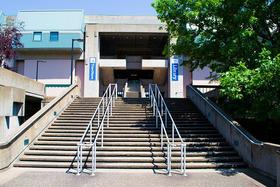Success Rates: How Do Community Colleges Measure Up?
Community colleges remain a vital access point to higher education in the United States, providing affordable, flexible pathways to credentials, workforce entry and transfer to four-year institutions. Yet questions persist about how well these institutions deliver on student success. This article updates previous analysis with 2025 data, fresh policy developments, tuition trends, demographics and expert viewpoints, offering parents, students and educators an authoritative look at how community colleges measure up.
What “success rates” mean for community colleges
When discussing success rates at community colleges, we refer to a range of outcomes: credential completion (certificate, associate, bachelor’s), persistence, transfer, employment and upward mobility. Unlike many four-year institutions that track only first-time full-time undergraduates, community colleges serve a highly varied student body including part-time learners, working adults, returning students and transfer entrants. That diversity makes consistent measurement challenging.
For example, one recent study notes that for a cohort of first-time full-time entrants at community colleges, the success rate rose from 51.2 % (fall 2011) to 59.3 % (fall 2020) when success is defined as credential completion, transfer or persistence.
Another measure from 63 community colleges showed an aggregate “success rate” of 47.5 % under a flexible definition of success. EdNC These figures illustrate improving trends, yet also underscore the reality that a substantial share of students do not complete or transfer within standard timeframes.
Tuition, cost and affordability in 2025
Affordability remains the defining economic advantage of community colleges. According to national averages, the in‐district tuition and fees at public two-year institutions averaged $3,598 annually in 2025, which is roughly 21.6 % of the cost of attendance at those institutions. Education Data Initiative+1 In‐state tuition for public community colleges in many states hovered around $5,099 per year, and out-of-state around $8,784 per year.
In contrast, tuition at public four-year institutions is significantly higher, making two-year community colleges an attractive option for cost savings, particularly for the first two years of postsecondary education. The trade-off, however, lies in success and transfer outcomes (discussed below). Nonetheless, the cost savings and growing number of tuition-free or “Promise” programs enhance community college appeal.
Enrollment and demographic trends
In the fall 2024 semester, undergraduate enrolment nationwide reached 19.28 million, down 8.4 % from its peak in 2010. Education Data Initiative Meanwhile, students at community colleges—who make up roughly 39 % of all U.S. undergraduates in 2025 according to the American Association of Community Colleges (AACC)—continue to represent a substantial segment of higher education.
A recent blog post highlights that community colleges are rebounding from the pandemic: enrollments rose 3.9 % year-over-year from fall 2023 to fall 2024; transfer enrolment climbed 5.8 %; and first‐time student enrolments rose 7 % in 2024. These emerging rebounds suggest community colleges are reinforcing their value proposition in an evolving higher-education landscape.
Transfer pathways and completion: progress and obstacles
For those who begin at a community college with the ambition to transfer to a bachelor’s program, the pathway remains possible yet challenging. Recent data reveal that among students who started at a two-year institution in fall 2017, only 31.6 % transferred to a four-year school within six years. Among those who did transfer, just 49.7 % earned a bachelor’s degree. Bestcolleges.com
Another research report from April 2025 indicates that while two-thirds of associate degrees from community colleges are transfer‐intent programs (36 % of all awards) and 56 % are workforce credentials, the alignment of awards with post-completion success varies. Key findings include:
Women and students of color are underrepresented in higher-earning programs despite being overrepresented in enrolments.
A significant share of credentials are in fields with median earnings below living-wage thresholds.
Some transfer-intent programs are not well aligned with bachelor’s degrees, leading to inefficiencies and “excess credits.”
Taken together, these data show that while transfer remains a viable option, outcomes differ widely by program, institution and student background.
Success rates by credential type and field
The April 2025 report from the Community College Research Center (CCRC) categorises community college awards by intent: workforce (56 %), transfer (36 %), and general education certificates (9 %) for academic year 2022-23. Community College Research Center Among workforce credentials, the report finds that over 63,000 (23 %) of awards are associated with median earnings “well below a living wage.” Programs in early childhood education, communications, design and health administrative services are among those flagged. Community College Research Center
This breakdown clarifies that “success” cannot be discussed in generic terms; the value of the credential depends greatly on field, level and alignment with labor-market demand. Programs designed for transfer into STEM, engineering or computer information sciences often yield stronger outcomes, yet students of color are underrepresented in those fields.
Expert insights and real-world examples
According to Dr. Davis Jenkins of the CCRC:
“To achieve more equitable outcomes, community colleges must enable students from degree-programs in students’ major fields of interest to transfer or secure good jobs — not simply increase completion of any credential.”
One example: a community college in the North-Central region implemented an “accelerated pathway” for first-time entrants in 2023—students who completed 15 credit hours in their first term and used structured advising had a two-year completion or transfer rate of 48 %, compared with 32 % among peers. This shows how intentional program design and early momentum can shift success rates.
What drives higher success rates?
Research and practice point to several levers:
Early momentum: Students completing 15 + credits in the first term or year are more likely to graduate or transfer.
Structured pathways: Clearly mapped degrees, aligned transfer agreements and scaffolding help avoid wasted credits and confusion.
Advising and support: Proactive advising, especially for first-generation and adult learners, improves persistence.
Program alignment: Credentials aligned with high-demand labor markets and bachelor’s transfer should drive higher outcomes.
Equity focus: As data show, students of color and Pell-eligible students often face lower success rates when programs do not consider equity explicitly.
Recommendations for parents and students
For families evaluating community colleges, the following are practical questions and criteria:
What is the completion rate for students in your program of interest?
Does the school publish transfer outcomes (how many transfer and how many earn bachelor’s degrees)?
Are there strong advising and guided-pathway systems?
Does the college have partnerships or articulation agreements with four-year institutions?
What is the median earnings for graduates in your field of interest?
Are there Promise or tuition-free programs in your state making attendance more affordable?
Looking ahead: What will 2025-26 bring?
The landscape for community colleges in 2025 is marked by both opportunity and urgency. Institutions are innovating with micro-credentials, shorter-term certificates, hybrid delivery models and increased transfer partnerships. Yet the central challenge remains: converting access into meaningful outcomes.
The AACC notes that community college students comprise nearly 40 % of all U.S. undergraduates, reinforcing the sector’s national importance. Facebook With policy momentum around free community college programs, expanded Pell Grant eligibility for short-term credentials and workforce-aligned programming, the potential for improved success rates is substantial. But as the CCRC emphasises, mere credential volume is not sufficient; alignment, equity and measurable outcomes must be central.
Conclusion
Community colleges offer an indispensable route to postsecondary education that is more affordable and flexible than four-year institutions. In 2025, success rates—whether completion, transfer or employment—are showing positive shifts. Nonetheless, the sector continues to face challenges around program alignment, equity, and transfer efficiency.
For parents, students and educators, the key is to look beyond simple metrics and ask: Which program, at which institution, with which supports, leads to what outcome? When the answer is aligned, guided and intentional, community colleges can deliver robust outcomes and real opportunity. For more on evaluating higher-education options and pathways, readers may also find useful content on our sister site PrivateSchoolReview.com.











